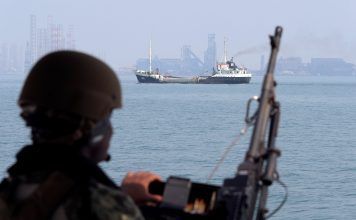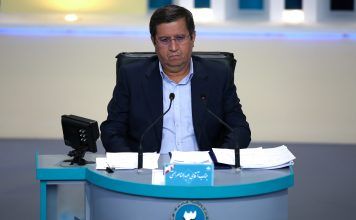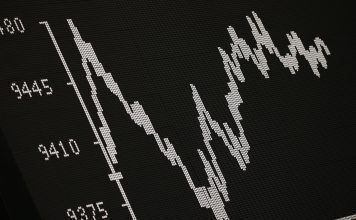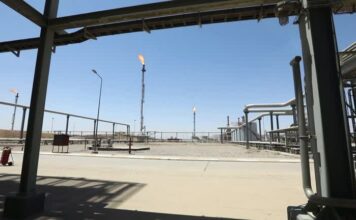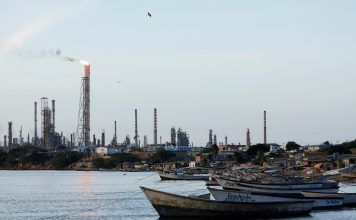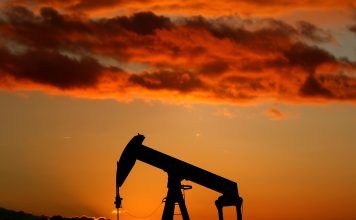
By Kayhan Life Staff
Chronic mismanagement of Iran’s domestic and foreign policy by successive governments, and the failure of the current President Ebrahim Raisi and his cabinet to strike a new nuclear deal with the West that would relax crippling sanctions, have brought the country’s economy to the brink of collapse and forced a large segment of the population into poverty.
Economists warn that the continued hyperinflation could spark widespread unrest that would surpass the nationwide protests of November 2019.
The year-on-year inflation rate (the percentage change in the Consumer Price Index during the last 12 months) reached 54 percent in July, the highest in the past 26 years. The year-on-year inflation rate for non-food goods and services rose to 36.9 percent. The year on year inflation rate rose to 86 percent for food, tobacco products, and beverages, showing a 4.4 percentage increase from a year earlier.
In practical terms, this means that every household in Iran spent on average 54 percent more to buy the same products this July than they did a year ago. Food prices have increased by 86 percent since last July. Many families in Iran cannot afford basic necessities.
Iran Bans Newspaper for Graphic of Khamenei Drawing Poverty Line
Also, the inflation rate for food products rose from 81.6 percent in June to 86 percent in July, a 4.5 percentage point increase in the space of a month.
Economists warn that the situation will only get worse if the government fails to bring inflation under control, revive domestic production and renegotiate a new nuclear deal with the West, resulting in the lifting of economic sanctions.
In an interview with the Tehran-based Didban Iran news agency on July 24, Iranian economist Seyyed Morteza Afghah said: “People have been protesting for a while now. People and trade unions, including teachers and pensioners, protest daily over the cost of living and high prices of goods.”
“Sadly, we lost many fellow Iranians in the November 2019 protest,” Mr. Afghah, an assistant professor at Shahid Chamran University of Ahvaz’s Faculty of Economics and Social Sciences, lamented. “I believe we will witness larger protests than before, given the government’s massive budget [deficit] for the current year, widespread poverty, and failure to revive the JCPOA [2015 Joint Comprehensive Plan of Action, the Iran nuclear deal.] We will see more social and political unrest among the public and inside the state if officials continue with the same policies.”
SPECIAL REPORT- Iran’s Leader Ordered Crackdown on Unrest: “Do Whatever It Takes to End It”
[aesop_image img=”https://kayhanlife.com/wp-content/uploads/2022/06/BAZNESHASTEGAN.png” panorama=”off” credit=”FILE PHOTO: Iranian pensioners protest in front of governmental buildings. KL./” align=”center” lightbox=”on” captionsrc=”custom” captionposition=”left” revealfx=”off” overlay_revealfx=”off”]
“Not only will most of these promises not be fulfilled; there is a vast difference between what is possible and what the public demands,” Afghah explained. “[President] Raisi and his allies said things during the election which we thought were campaign rhetoric. Despite all the setbacks they have suffered since taking over the government, they still make promises. That is puzzling.”
Afghah noted that the elimination of the preferred foreign exchange rate in April caused the price of food products to rise by 80 percent.
“The government naively believed that the move would increase the prices for only three or four items,” Afghah said. “The measure harmed people’s livelihood, but reversing that decision would mean another defeat for the government. Raisi’s government must reconsider its actions. The cabinet does not have the required experience and expertise. It is doubtful that reversing the policy would help to control prices. Prices will never go down, even if they somehow control them.”
“Mr. Raisi lacks practical executive experience,” Afghah argued. “He was in the Judiciary, which has a different work culture than the executive branch. As the head of the Judiciary, Mr. Raisi issued directives, one of his main weak points, because he wanted to solve the country’s economic problems with executive orders. He must realize that the economy does not understand decrees.”
“Raisi thinks the executive office is like a court that resolves issues through rulings,” Afghah noted. “The First vice President, Mr. [Mohammad] Mokhber, does not have a degree in economics and knows nothing about it. The director of the Planning and Budget Organization [Seyyed Massoud Mirkazemi] and the Governor of Iran’s Central Bank [Ali Salehabadi] did not study economics. Mr. [Ehsan] Khandouzi, Minister of Economic Affairs and Finance, is an economist but lacks practical work experience in the area.”
EXCLUSIVE – U.N. Expert Backs Probe into Iran’s 1988 Killings, Raisi’s Role
ANALYSIS: Hamid Nouri’s Life Sentence Is A Condemnation of Iran
In an interview with the Tehran-based Eghtesad-24 news website on July 25, Homayoun Darabi, a capital market expert, explained that the most effective way to control inflation is to raise interest rates. However, that approach would not work in Iran, given that high inflation results from a shortage of goods and high production costs.
Mr. Darabi warned that prescriptive pricing was a trap that had snared the government.
Prescriptive pricing is a technique for maximizing future profit/revenue using demand modeling and price optimization. Demand modeling explores causal relationships among demands, prices, and other factors, laying the foundation for price optimization.
“After causing severe losses to business and institutions, the ‘prescriptive-pricing trap’ will affect the government,” Darabi explained. “Prescriptive pricing has controlled the energy market for the past four decades, which has sparked protests.”
“Rising interest rates would cause high liquidity, banking disparity, a massive increase in the price of goods, and a sharp drop in the value of the national currency,” Darabi noted. “If the government raises the interest rate, it has to print money to pay the interest. The money will flow into the housing and foreign exchange markets, raising the inflation rate.”
Liquidity refers to how easily or efficiently an asset or security can be converted into ready cash without affecting its market price. The most liquid asset of all is cash itself.
Darabi warned that the current economic policy would cause hyperinflation to continue through next year, adding that the government adopted three wrong approaches. It has reduced customs tax to lower the cost of imports despite depleted foreign exchange reserves. However, it has been forced to increase imports which have been detrimental to the country’s industries and manufacturing sector. Banks have increased the interest rates to 22 percent. The government has also changed manufacturing and consumer prices. It will continue to make the same mistake by implementing the prescriptive pricing model.
Increased liquidity is one consequence of President Raisi’s failed economic policy. According to the Iranian Central Bank’s report, the liquidity reached $189 billion in June. Also, the country created more money in June than it did in the previous ten years.
Money creation (money issuance) is how a country increases its money supply.
A negative economic outlook causes inflation to rise. Economists argue that while increasing the supply of national currency (printing new money) would raise inflation in the current situation, cryptocurrency (or virtual currency refers to electronically created and stored payments) could also experience future inflation. The public is usually alarmed by the state of the economy when the money supply increases and becomes further pessimistic about the future of the country’s economy when they see an increase in cryptocurrency.
Some politicians argue that Ayatollah Khamenei is the only person in the country who can solve Iran’s economic crisis.
Lifting U.S. Sanctions Will Not By Itself Revive Iranian Economy, Officials Say
In comments reported by the Tehran-based Etemad online newspaper on July 25, Hossein Marashi, a member of the reformist Executive of Construction of Iran Party, argued that “no one but the leader of the Revolution [Ayatollah Ali Khamenei] can rescue the country,” adding “we will face a dire situation if the current harmful trend continues.”
“We cannot understand this country through the narrow lens of political factions,” said Mr. Marashi, who served as the head of Iran’s Cultural Heritage, Handicraft, and Tourism Organization (ICHHTO) from 2004 to 2005. “The Islamic Republic must return to its roots. It needs positive reforms, and no one but the exalted leader can do that. Neither President [Ebrahim Raisi], nor the head of the Judiciary [Mohsen Ejei], nor the Majlis Speaker [Mohammad-Bagher] Ghalibaf-individually or collectively can change the situation. Only the leader can rescue the country.”
“If we are concerned about the future of Iran and the Islamic Republic, and want to honor the person of Ayatollah Seyyed Ali Khamenei, then we should join forces and put the Islamic Republic on a new track,” said Marashi, a former member of the Majlis (Iranian Parliament), representing Kerman electoral constituency from 1996 to 2004. “We must clarify the parameters of political rivalries, enabling us to work better and accomplish more. We must discover how to grow culturally and economically.”
“We must help the Islamic Republic and the leader,” Marashi, who was the head of the President’s Office (from 1994 to 1996) under the late President Akbar Hashemi Rafsanjani (in office from 1989 to August 1997), argued. “We will face a dire situation if the country does not implement true reforms, and we cannot stop and reverse the current harmful trend (capital flight, brain drain, shrinking middle-class, hyperinflation, increased dissatisfaction).”
“The inflation rate was 40 percent when President Raisi took office [in August 2021], but it has now reached 60 percent. The situation has directly resulted from the government’s wrong policies by failing to prioritize correctly and pouring fuel on the fire,” Marashi, who served as the Governor of the southeastern Kerman Province from 1985 to 1994, added.


